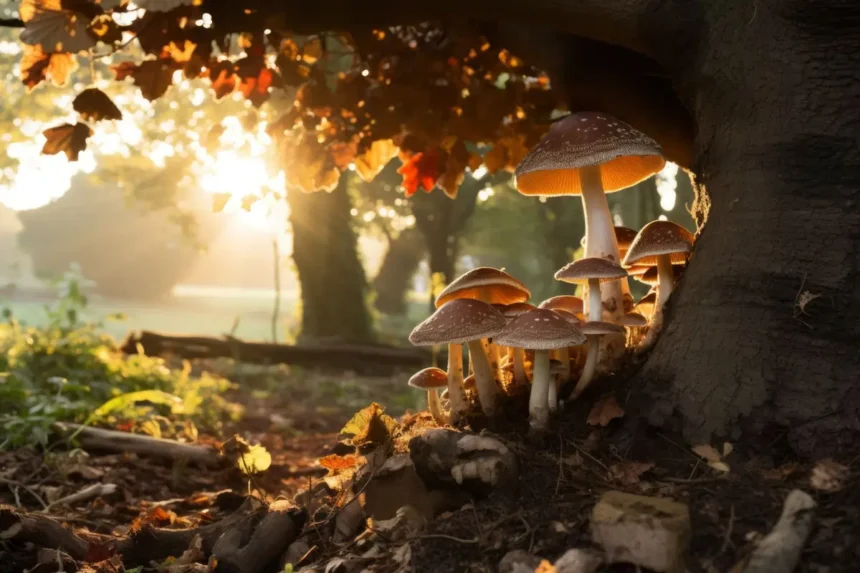Introduction
Have you ever wondered how the intricate dance of life unfolds within a deciduous forest, where each organism plays a crucial role in maintaining balance and harmony?
The Deciduous Forest Food Web is a fascinating tapestry of interactions and dependencies among various species, each contributing to the ecosystem’s stability and health. In a deciduous forest, plants, herbivores, carnivores, and decomposers form a complex network, illustrating the energy flow and nutrients cycling through different trophic levels.
Read also: Why is Food Web Important? Types of Food web
Understanding the Deciduous Forest Food Web sheds light on the intricate relationships within this biome and highlights the importance of biodiversity and ecosystem health. As we delve deeper into the Deciduous Forest Food Web, we uncover the vital connections that sustain life and the impacts of environmental changes on this delicate balance.
Deciduous Forest Ecosystem
Regions of Deciduous Forests
Temperate deciduous forests are primarily situated in the western part of the United States, Canada, and a huge part of Europe, along with some regions of China and Japan.
Read also: Cultural Differences Between Canada and the USA: 5 Unexpected Contrasts
Characteristics of Deciduous Forests
Deciduous forests grow in one season out of the other four. They are rich in moisture, and the soil is rich in minerals, as are the leaves shed on the trees. Various species break down organic matter. The leaves are broad-leaved and settle on a canopy. At the time of leaf shedding, the plants enter a dormant period.
Read also: 5 Most Extreme Climates on Earth That Make Survival Impossible
Monsoon Climate and Its Impact on Deciduous Forests
During the monsoon season, the soil becomes saturated with water, leading to the growth and proliferation of plant species, including deciduous trees and shrubs. The immense humidity also handles the development of epiphytes, including orchids and bromeliads that live on the branches of trees and other plants. However, during the dry season, the decline in rainfall can lead to water stress for many plant and animal species.
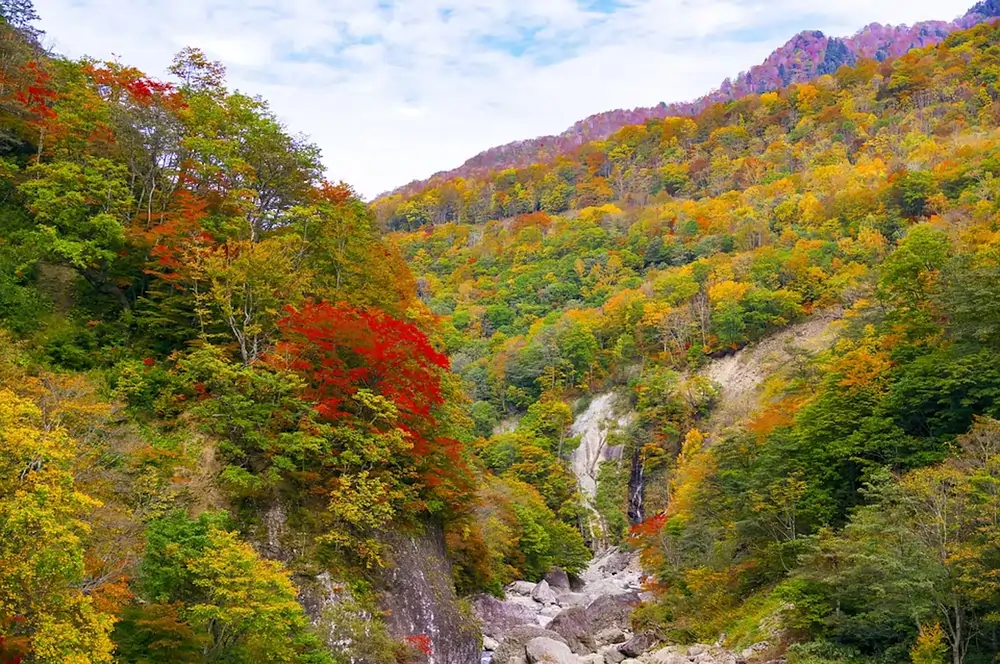
Read also: Rainforest Food Web: Brutal or Beautiful? Explore the Jungle’s Hunger Games
Many deciduous trees and shrubs in the biome shed their leaves when water needs to be conserved. Differences in the temperature, moisture, and elevation may cause the formation of specific plants associated with the deciduous forest pattern.
Biodiversity in Deciduous Forests
Deciduous woodlands have moderate biodiversity, no temperate extremes, and moderate yearly rainfall. Many plants may survive in this climate, but not as many as in tropical rainforests. The various levels in the deciduous forests provide a massive range of habitats for plants and animals to keep thriving.
Flora and fauna are well adapted to thriving in the specific situations of each layer. Deciduous woodlands are seasonal ecosystems. During summer, they are very active and have high levels of nutrient cycling. During the winter, there can be little growth or any other nutrient cycling, and many more species are dormant and eat in a small amount.
Read also: Biodiversity Crisis: 5 Shocking Ways We’re Losing Nature’s Riches
Components of the Deciduous Forest Food Web
Producers in the Deciduous Forest
Plants make food utilizing sunlight, water, and carbon dioxide, possibly through photosynthesis. They initiate the food chain, and there are more plants than any other thing because they are the lower part of the food chain and give the energy for everything else. They are known as producers.
Common trees include oak, maple, beech, hickory, chestnut, and other plants like mountain laurel, azaleas, and mosses.
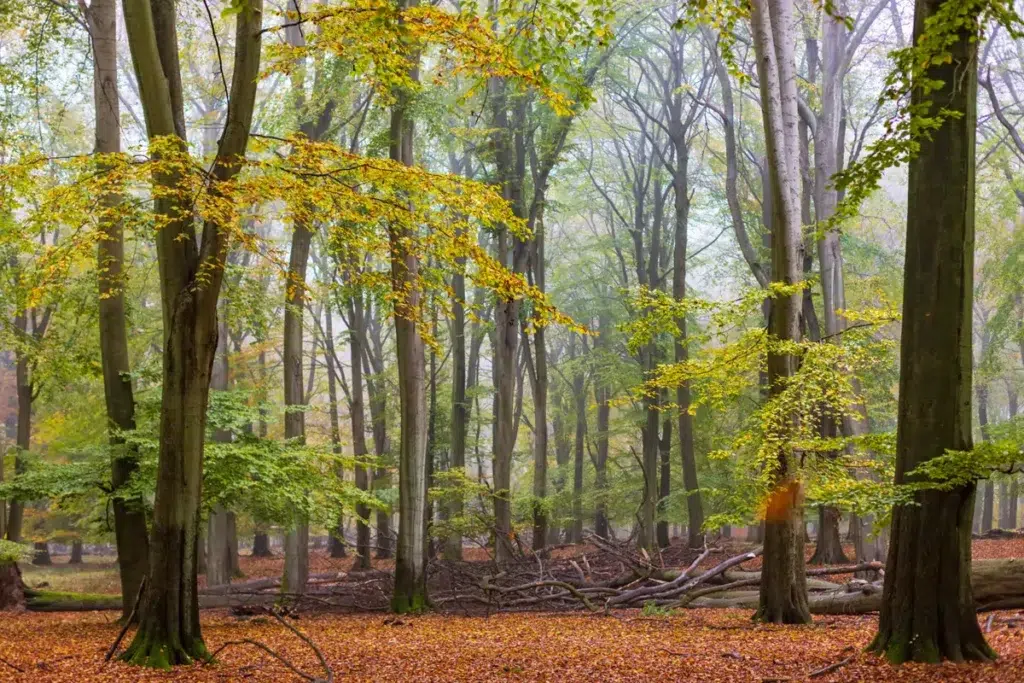
Primary Consumers in the Food Chain
Primary consumers in the deciduous forests include animals like insects, mice, chipmunks, squirrels, rabbits, and deer, and most of them feed on plants and are known as herbivores. There are also fewer herbivores and other plants because each herbivore requires a tremendous amount of plant matter. Herbivores directly eat on the producers. These are known as primary consumers.
Read also: Importance of Food Chains In The Energy Flow In The Ecosystem
Herbivores and Their Roles
Some deciduous forests include large animals, such as deer, mice, and elk, and smaller animals like squirrels, chipmunks, and rabbits. Other insects include herbivores like ants and caterpillars.
Secondary and Tertiary Consumers
- Animals such as snipers, birds, and snakes that feed on primary consumers include herbivores, also known as Secondary Consumers. There are many secondary consumers other than primary consumers because each secondary consumer needs to eat several primary consumers for survival.
- Animals such as foxes, coyotes, eagles, and owls that feed on the first and second consumers are known as carnivores that feed on meat. They are known as tertiary consumers. There are fewer tertiary consumers than secondary consumers because all tertiary consumers need to feed on many secondary consumers to live.
Read also: Urgent: Risks Threaten the Biodiversity of the Hindu Kush Himalayas
Decomposers and Nutrient Cycling
Decomposers play a vital role in the nutrient cycling of deciduous forests. These organisms include fungi, bacteria, and other invertebrates, including earthworms and insects. They even break down complex organic matter, such as dead organic matter like fallen leaves, dead plants, and the remains of animals.
Earthworms, termites, and millipedes are known as detrivores. They decompose complex organic materials into elementary organic compounds, making the nutrients available for the primary producers.
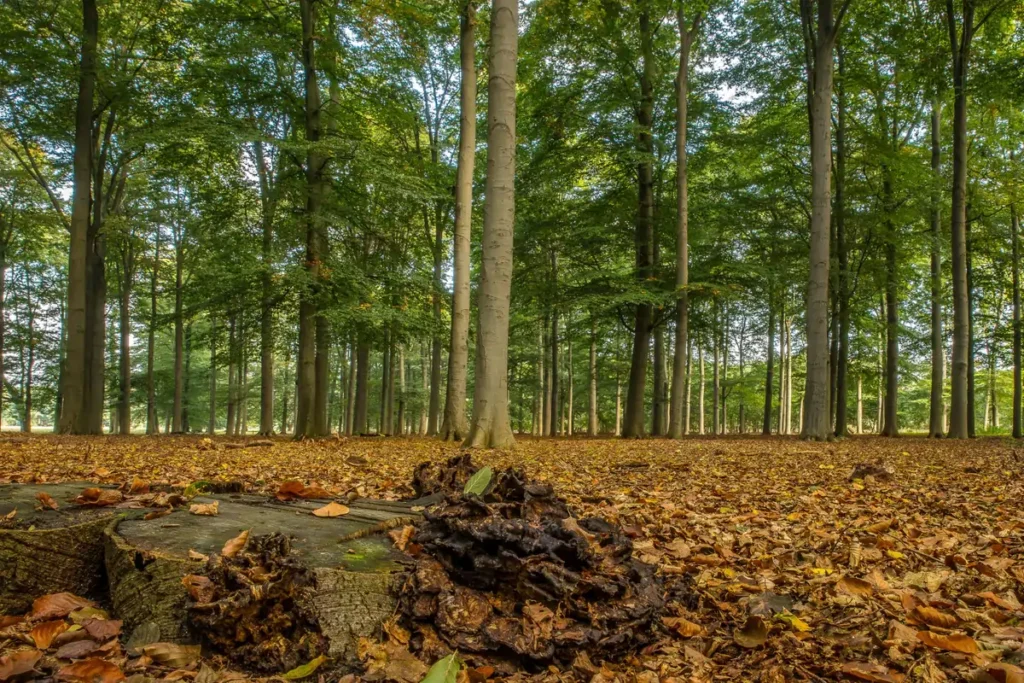
The Nutrients Cycles with the help of herbivores, hunted by carnivores. Consistent nutrient recycling ensures the forest ecosystem’s sustainability and productivity. But without decomposers’ help, the deciduous forest floor would collect organic matter, and the availability of nutrients for plants would decline, breaking the entire food web.
Read also: Circles of Life: Decoding the 5 Important Biogeochemical Cycles of the Ecosystem
Energy Flow and Trophic Levels
Understanding Trophic Levels
The trophic level in an ecosystem measures the length of the food chains that link the species to basal species. This section discusses its threats as part of the trophic levels that apply to all ecosystems. A trophic level consists of 5 levels: one primary producer, two primary consumers, three secondary consumers, four tertiary consumers, and five apex predators.
Energy Transfer in the Food Web
Energy is transferred in the food web among the trophic levels when one organism feeds on the other. This influences the transfer of molecules that are rich in energy from the prey’s body. While this energy transfer works, they are inefficient enough to limit the length of food chains.
When energy reaches a trophic level, some of it is stored as biomass in organisms’ bodies. This energy is then available at the next trophic level, as only a bit of energy is stored as biomass at one trophic level per unit of time. It is kept as biomass in another trophic level per the same unit of time.
The primary part of the food web includes deciduous trees like oaks, maples, and birches. They, through photosynthesis, convert solar energy into chemical energy.
Interactions within the Food Web
Predator-Prey Relationships
The predator-prey rapport includes the connection between two species and their positive effects on each other. In this relationship, one species feeds on another, becoming the food for the other. The predator-prey relationship develops over time as many generations of each species communicate.
While researching population species dynamics or changes in the population over time, scientists have noticed that predator-prey rapport greatly influences the populations of each species. In some rapport, the predator only has one particular prey item. In these scenarios, it is easy to see how the predator-prey influences the population dynamics of each species.
Read also: Discover 5 Thriving Secrets about Forest Food Web
Symbiotic Relationships in the Ecosystem
Mutualism, Commensalism, and Parasitism
It is the connection between the organisms of two different species that gets its benefits. Mutualistic arrangements are most probably developing between organisms with widely various living requirements. Some renowned mutualistic arrangements are available. The rapport between nitrogen-fixing bacteria and leguminous plants is an example of Mutualism.
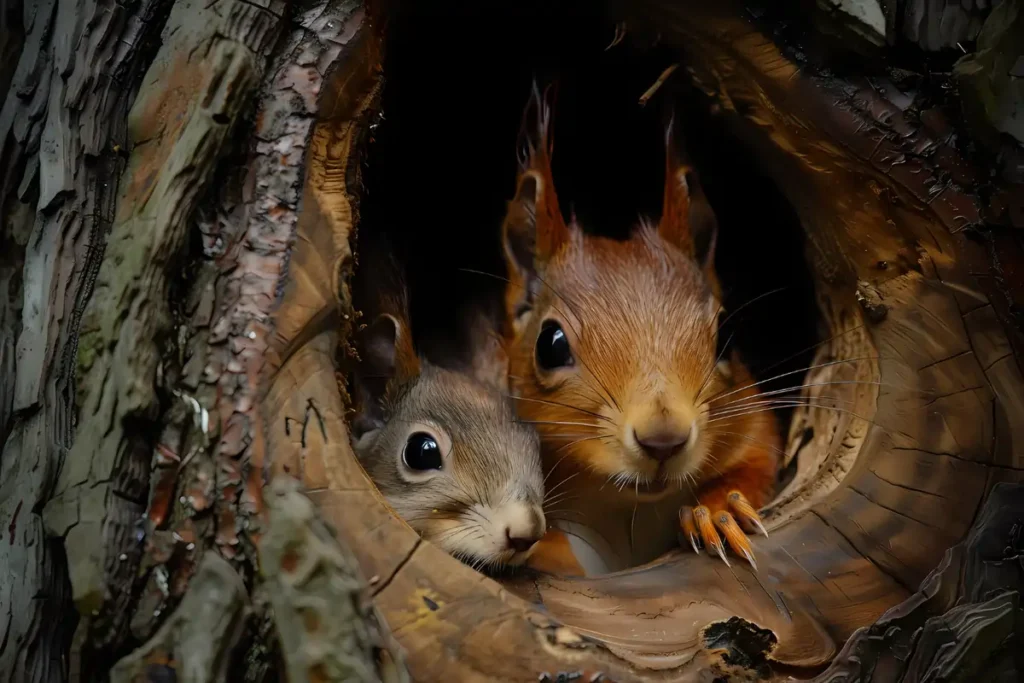
Commensalism is the relationship among individuals of two species in which one species gets food and other offerings from the other without helping or harming the latter. The commensal benefits from the association may include getting nutrients, like shelter or support for locomotion, from different host species; it is frequently between a more prominent host and a little commensal.
It is a relationship between two species of plants and animals in which one species benefits at the expense of the other. It might include ticks, leeches, and lice that stay on the bodies of others in the host and do not cause them to suffer from diseases.
Environmental Factors Affecting the Food Web
Climate Change and Global Warming
Global warming and climatic change affect the food web of deciduous forests and influence the complex communications between all levels of organisms. As the temperature rises, the species may shift towards the north, affecting the species composition.
Read also: Climate Change | 7 Alarming Effects and the Major Causes Behind
Additionally, warmer temperatures change the timing of biological events such as flowering, leafing, and breeding. Precipitation affects water availability in deciduous forests, thus impacting their growth and development. Drought situations may lead to a shortage of food for herbivores and predators. Extreme weather conditions or natural calamities lead to the destruction of habitats.
Read also: Global Warming | The Shocking Future of Our Planet
Impact of Pollution
Pollution negatively affects the food web of deciduous forests in various ways, including the health of specific organisms and biodiversity dynamics. For instance, air pollution caused by sulfur dioxide and nitrogen dioxide leads to acid rain.
This raises the soil’s acidity and changes the pH, thus influencing nutrient availability. Acidified soils can harm plant roots and reduce the growth and availability of herbivores.
Read also: How Does Pollution Affect Animals? – 5 Tragic Effects
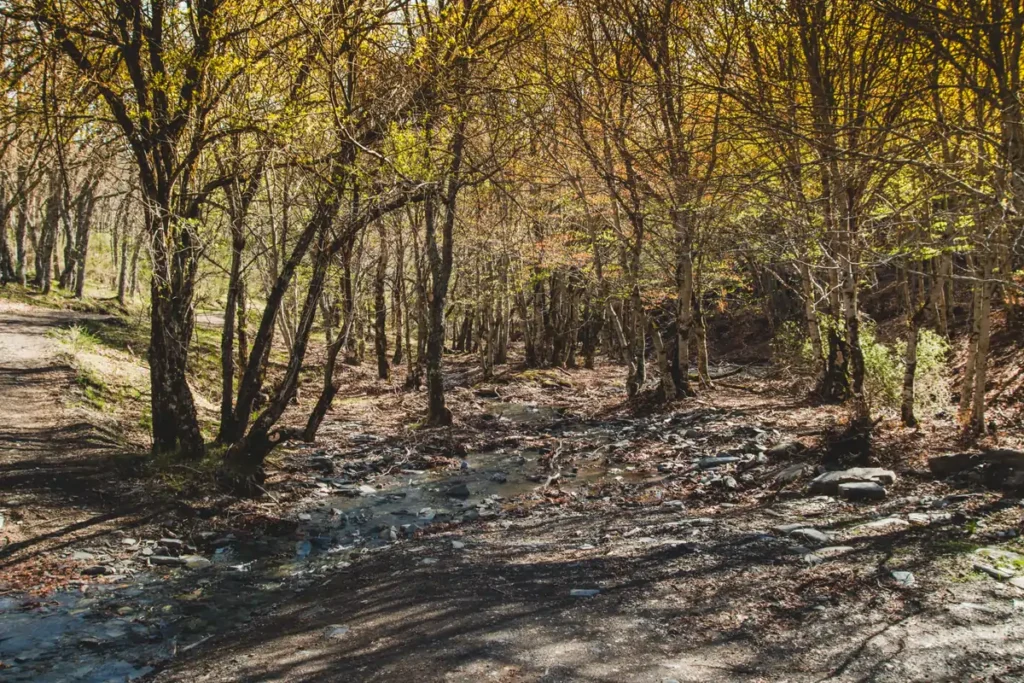
Nutrient Availability
The presence and distribution of required nutrients like nitrogen and phosphorus can affect the primary production of the food web.
Natural and man-made Disturbances
Natural and man-made disturbances, including habitat structure and species composition, lead to food web changes.
Conclusion
The Deciduous Forest Food Web is an intricate and balanced system where every species is vital, from the smallest decomposer to the apex predator. This complex network illustrates the flow of energy and nutrients, highlighting the interconnectedness of life within the deciduous forest.
Understanding the Deciduous Forest Food Web underscores the importance of biodiversity and the delicate balance necessary for ecosystem health. As we explore the relationships within this food web, we gain insight into the critical connections that sustain life.
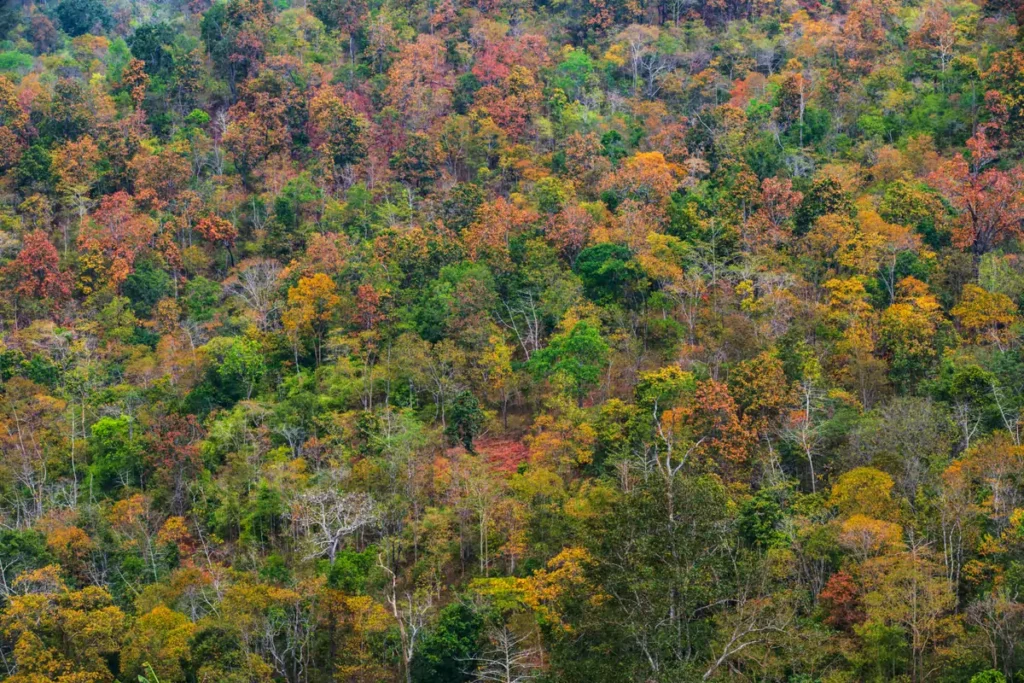
Recognizing the impacts of environmental changes, such as climate change and pollution, on these ecosystems emphasizes the urgency of conservation efforts. Preserving the Deciduous Forest Food Web is essential to maintaining ecological balance and ensuring the survival of diverse species for future generations.
Call to action
Explore the wonders of the Deciduous Forest Food Web and join efforts to protect these vital ecosystems. Raise awareness and support conservation initiatives to preserve our planet’s biodiversity for future generations. Let’s make a difference together!
FAQs
1. What is a Deciduous Forest Food Web?
A Deciduous Forest Food Web is a complex network of interconnected food chains within a forest ecosystem. It illustrates how energy and nutrients flow from producers (plants) to various levels of consumers (herbivores, carnivores, omnivores) and finally to decomposers (fungi, bacteria). This web showcases the interdependence of different species and highlights the importance of each organism in maintaining ecological balance.
2. How does the Deciduous Forest Food Web differ from a food chain?
A food chain is a linear sequence showing who eats whom, from producers to apex predators. In contrast, a Deciduous Forest Food Web is more complex, depicting multiple food chains interconnected within the ecosystem. This web better represents the myriad relationships and interactions between species, reflecting the ecosystem’s biodiversity and stability.
3. What are the primary components of a Deciduous Forest Food Web?
The primary components of a Deciduous Forest Food Web include:
Producers: Plants and trees that convert sunlight into energy through photosynthesis.
Primary Consumers: Herbivores that feed on producers, such as deer and insects.
Secondary Consumers: Carnivores and omnivores that eat primary consumers, like foxes and birds.
Tertiary Consumers: Apex predators, such as wolves, feed on secondary consumers,
Decomposers: Organisms like fungi, bacteria, etc., break down dead matter and recycle nutrients into the ecosystem.
4. Why is biodiversity important in the Deciduous Forest Food Web?
Biodiversity is crucial in the Deciduous Forest Food Web because it ensures ecosystem resilience and stability. A diverse range of species helps maintain balance by providing various roles within the food web, from producers to decomposers. High biodiversity also allows ecosystems to withstand better environmental changes and disturbances, promoting overall health and sustainability.
5. How do human activities impact the Deciduous Forest Food Web?
Anthropogenic activities such as deforestation, road construction, industrialization, mining, pollution, and climate change significantly impact the Deciduous Forest Food Web. Deforestation reduces habitat and food sources for many species, leading to population declines and altered food web dynamics. Pollution can poison water and soil, affecting all levels of the food web. Climate change shifts the conditions of the forest, disrupting seasonal patterns and the availability of resources, further stressing the ecosystem.
6. What conservation efforts are in place to protect the Deciduous Forest Food Web?
Conservation efforts to protect the Deciduous Forest Food Web may include:
Protected Areas: Establish national parks, protected forests, sanctuaries, and reserves to safeguard habitats.
Reforestation Projects: Planting trees to restore degraded areas.
Sustainable Practices: Promoting eco-friendly forestry and land use practices.
Education and Awareness Initiatives: Organise Public awareness Programmes to spread the importance of deciduous forests and encourage community involvement in conservation efforts.
Legislation: Enforcing laws and regulations that protect forests and wildlife from harmful activities.
References
- (N.d.-c). State.Mn.Us. Retrieved May 30, 2024, from https://www.dnr.state.mn.us/biomes/deciduous.html
- The Editors of Encyclopedia Britannica. (2023). deciduous forest. In Encyclopedia Britannica.
- Decomposers. (n.d.). Nationalgeographic.org. Retrieved May 30, 2024, from https://education.nationalgeographic.org/resource/decomposers/
- Deciduous forest food web activity. (n.d.). Exploringnature.org. Retrieved May 30, 2024, from https://www.exploringnature.org/db/view/Deciduous-Forest-Food-Web-Activity
- Deciduous forest food web activity. (n.d.). Exploringnature.org. Retrieved May 30, 2024, from https://www.exploringnature.org/db/view/Deciduous-Forest-Food-Web-Activity
- No title. (n.d.). Twinkl. Co.In. Retrieved May 30, 2024, from https://www.twinkl.co.in/teaching-wiki/food-web
- Predator prey relationship. (2019, April 17). Biology Dictionary. https://biologydictionary.net/predator-prey-relationship/
- The Editors of Encyclopedia Britannica. (2024). ecosystem. In Encyclopedia Britannica.

